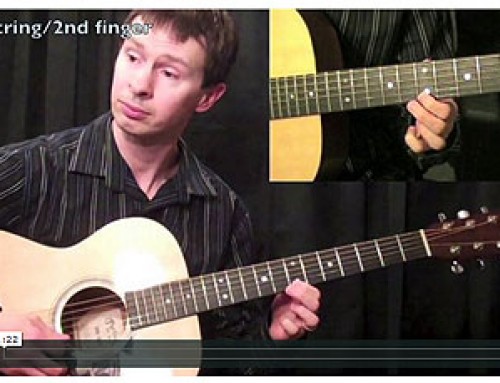You’re probably already very familiar with a traditional 12-bar Blues if you’re reading this.
If not, check out a 12-bar Blues format before looking at the Bird Blues.
This will give you a little better insight into the structure and understanding of the chord substitution.
This progression is named after the great legendary Jazz alto player, Charlie arker.
He lived in the Bebop era and always created chord substitutions in his work.
A perfect example of this chord progression is his song, “Blues For Alice”.
Here is the chord progression:
Fmaj7 / / / | Em7b5 / A7 / | Dm7 / G7 / | Cm7 / F7 / |
Bb7 / / / | Bbm7 / Eb7 / | Am7 / D7 / | Abm7 / Db7 / |
Gm7 / / / | C7 / / / | Fmaj7 / Dm7 / | Gm7 / C7 / |
So, what exactly is going here? I’m going to break this progression down to 5 parts with regards to the substitution concepts and key centers.
This will help you understand and memorize the sequence so it doesn’t just appear to be a bunch of chords with no rhymt or reason!
1 – Fmajor7: This is the “1” chord. You’re in the key of “F” here.
2 – Em7b5 / A7 / | Dm7 / G7 / | Cm7 / F7 / |:
This is simply a descending 2-5 sequence in whole steps. The 1st measure you’re in the key of D minor.
The 2nd measure is the key of “C”. The 3rd measure is the key of “Bb”.
3 – Bb7: This is where the traditional “4” chord is in a 12-bar Blues.
4 – Bbm7 / Eb7 / | Am7 / D7 / | Abm7 / Db7 / | Gm7///|C7 / / / |
This is a chromatic descending 2-5 sequence – VERY SIMPLE. The 1st measure is in the key of “Ab”. The 2nd measure is in the key of “G”.
The 3rd measure is in the key of “Gb” and the 4th measure is in the key of “F”.
5 – Fmaj7 / Dm7 / | Gm7 / C7 / |: This is a “1-6-2-5” in “F”.
Here are the tabs for the chords:
Fmaj7 Em7b5 A7 Dm7 G7 Cm7 F7 Bb7 E |------------------------------------------------------------| B |-5----------8--------5-------6-----3-------4-----1-------6--| G |-5----------7--------6-------5-----4-------3-----2-------7--| D |-7----------8--------5-------7-----3-------5-----1-------6--| A |-8----------7----------------5-------------3----------------| E |---------------------5-------------3-------------1-------6--|
Bbm7 Eb7 Am7 D7 Abm7 Db7 Gm7 C7 E |----------------------------------------------------------| B |6--------4-------5-------3------4--------2-----3--------1-| G |6--------6-------5-------5------4--------4-----3--------3-| D |6--------5-------5-------4------4--------3-----3--------2-| A |---------6---------------5---------------4--------------3-| E |6----------------5--------------4--------------3----------|
Fmaj7 Dm7 Gm7 C7 E |----------------------------------| B |---1---------6-------3--------1---| G |---2---------5-------3--------3---| D |---2---------7-------3--------2---| A |-------------5----------------3---| E |---1-----------------3------------|
At first glance, this Bird Blues looks confusing however by analyzing the breakdown it makes a lot more sense!
Now, let’s move onto some strategies that will help you solo over this progression.
Want To Learn More …
 Blues is a style of music that has endured since the early decades of the twentieth century.
Blues is a style of music that has endured since the early decades of the twentieth century.
It is hard to imagine the blues without guitar.
Learning the blues is rated as the second topic most guitarists would love to learn.
No matter where you are now, no matter how long you’ve searched for the secrets, the tricks, or the techniques.
We show you how to play the acoustic guitar the right way and alleviate the frustration and stress that comes with learning anything new.






Leave A Comment